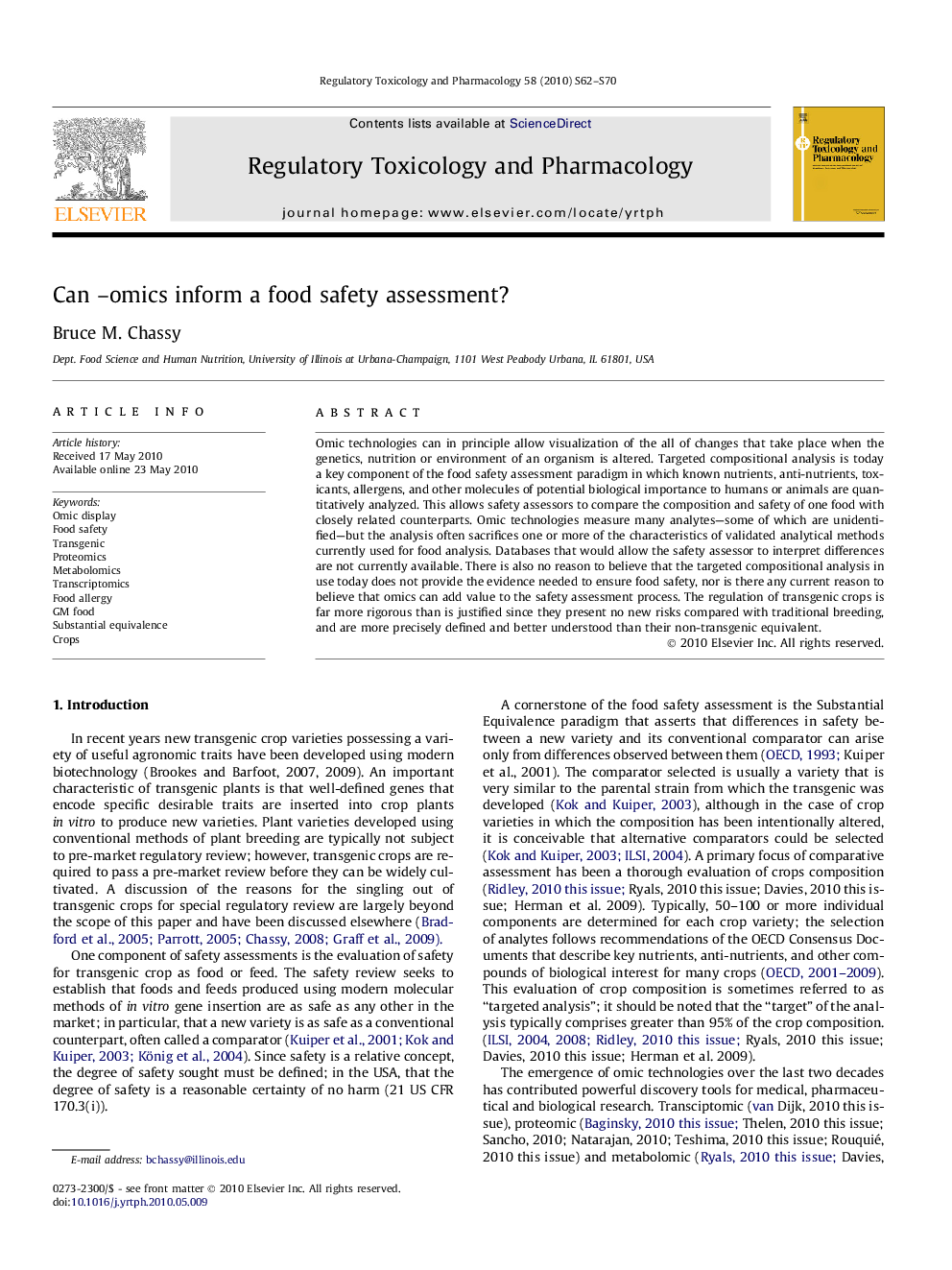| Article ID | Journal | Published Year | Pages | File Type |
|---|---|---|---|---|
| 2592464 | Regulatory Toxicology and Pharmacology | 2010 | 9 Pages |
Omic technologies can in principle allow visualization of the all of changes that take place when the genetics, nutrition or environment of an organism is altered. Targeted compositional analysis is today a key component of the food safety assessment paradigm in which known nutrients, anti-nutrients, toxicants, allergens, and other molecules of potential biological importance to humans or animals are quantitatively analyzed. This allows safety assessors to compare the composition and safety of one food with closely related counterparts. Omic technologies measure many analytes—some of which are unidentified—but the analysis often sacrifices one or more of the characteristics of validated analytical methods currently used for food analysis. Databases that would allow the safety assessor to interpret differences are not currently available. There is also no reason to believe that the targeted compositional analysis in use today does not provide the evidence needed to ensure food safety, nor is there any current reason to believe that omics can add value to the safety assessment process. The regulation of transgenic crops is far more rigorous than is justified since they present no new risks compared with traditional breeding, and are more precisely defined and better understood than their non-transgenic equivalent.
